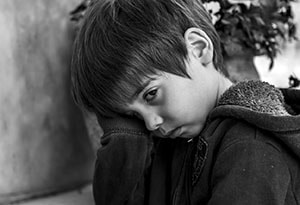|
By Abby Esquivel, LCSW, therapist and owner of Be and Belong Counseling LLC.  As a child therapist specializing in trauma, I have heard the implications of domestic violence often dismissed from caseworkers, caregivers, and agencies alike in a multitude of settings: “It was just DV.” “The child didn’t even witness the abuse.” “S/he was just a baby when removed from the home.” I can see where people are coming from. It could seem that the child who has “only” witnessed or experienced living in a home with domestic violence is surely not as traumatized and affected as a child who was personally abused. The truth is, we now have research that confirms the opposite. The most significant psychological outcomes down the road are associated with children who grow up in homes with domestic violence (Grant, 2019). This means that to experience physical abuse is actually BETTER, on a neurological level, for the child to make sense of and heal from than growing up in a home with intimate partner violence. Deep breath. Let’s back up and consider child development. In a healthy child-parent relationship, a child would have a need and the need would be met by the parent. This pattern occurs a million times over and over, and it’s what creates secure attachment. Children feel safe, know their voices matter, and their physical and emotional needs are cared for. When a child is reaching out for help and their caregiver is hurt or is the source of their stress, then the child is left without supports. This causes severe neurological disorganization and would be considered an attachment rupture, or attachment injury.
0 Comments
By Sybil Cummin, MA, LPC, ACS By Megan Burch, LSW, Therapist/Owner of Joy Creek Counseling, LLC  Welcome to Part II of Seeing Survivors Through a Lens of Compassion! We are looking at the behaviors of survivors of domestic violence in order to shift to a place of understanding and compassion. In Part I, we deconstructed some common lenses that we might be currently using with our survivor clients. If you haven’t read the first piece, it would be helpful to start there. Understanding behaviors is the first step to shifting into a place of compassion. After exploring the depth of survivor decision making and context, let’s first take a deep breath and pause. I think that it’s really important to sit in this pause. Part I may have been difficult to read as we may have found ourselves making some of those statements of: Why doesn’t my client just leave? My client lies to me. My client is minimizing the abuse. We may have made those statements to a client, to another helping professional, to ourselves. Let’s bring in some self-compassion for ourselves. You are on this website because you want to improve your practice with domestic violence. We can’t improve our practice until we take a look at our current practice. We are all learning together. |
AuthorSybil Cummin, MA, LPC, ACS Archives
February 2021
Categories
All
|
